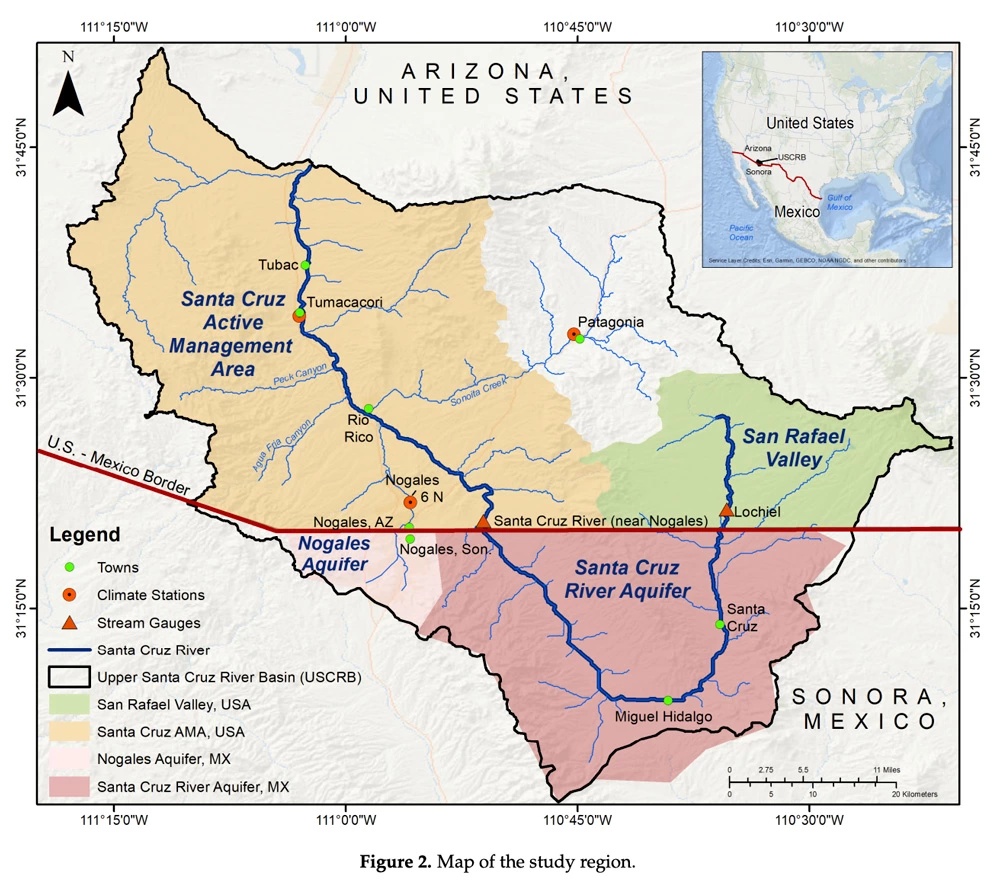
Abstract: In the parched Upper Santa Cruz River Basin (USCRB), a binational USA–Mexico basin, the water resources depend on rainfall-triggered infrequent flow events in ephemeral channels to recharge its storage-limited aquifers. In-situ data from the basin highlight a year-round warming trend since the 1980s and a concerning decline in average precipitation (streamflow) from 1955–2000 to 2001–2020 by 50% (87.6%) and 17% (63%) during the winter and summer, respectively. Binational sustainable management of the basins water resources requires a careful consideration of prospective climatic changes. In this article we review relevant studies with climate projections for the mid-21st century of four weather systems that affect the region’s precipitation. First, the North American Monsoon (NAM) weather system accounts for ~60% of the region’s annual rainfall. The total NAM precipitation is projected to decline while heavy rainfall events are expected to intensify. Second, the frequency of the pacific cold fronts, the region’s prevalent source of winter precipitation, is projected to decline. Third, the frequency and intensity of future atmospheric rivers, a weather system that brings winter rainfall to the region, are projected to increase. Fourth, the frequency and intensity of large eastern pacific tropical cyclones (TC) are expected to increase. On rare occasions, remnants of TC make their way to the USCRB to cause storms with considerable impact on the region’s water resources. In contrast to the high confidence projections for the warming trend to persist throughout the mid-21st century, the precipitation projections of these four weather systems affecting the region encompass large uncertainties and studies have often reported contradicting trends. An added source of uncertainty is that the USCRB is located at the periphery of the four rain-bearing weather systems and small mesoscale changes in these weather systems may have accentuated impacts on their edges. Despite the high uncertainty in the projections of future precipitation, the early 21st century drying trend and the projected mid-21st century decline in precipitation events serve as a pressing call for planning and actions to attain sustainable water resources management that reliably satisfies future demands.
Keywords: Santa Cruz River; climate change; water resources; transboundary aquifer; transboundary aquifer assessment; Arizona; Sonora

